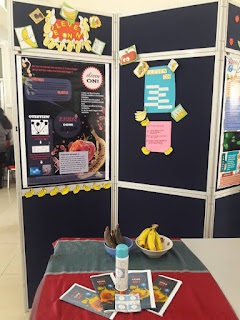E-Portfolio: Microbiology - Week 7
What is up, people!
This week, we learned on internal structure and its function of a prokaryote with Dr. Wan
This week, we learned on internal structure and its function of a prokaryote with Dr. Wan
 |
| Courtesy: https://www.shmoop.com/biology-cells/prokaryotic-cells.html |
I am actually quiet interested with plasmid, a small
structure, circular, double-stranded DNA molecule that is distinct from a
cell's chromosomal DNA. Plasmids naturally exist in bacterial cells, and they
also occur in some eukaryotes. Often, the genes carried in plasmids provide
bacteria with genetic advantages, such as antibiotic resistance. Plasmids have
a wide range of lengths, from roughly one thousand DNA base pairs to hundreds
of thousands of base pairs. When a bacterium divides, all of the plasmids contained
within the cell are copied such that each daughter cell receives a copy of each
plasmid. Bacteria can also transfer plasmids to one another through a process
called conjugation using sex pili.
For our experiment this week, we had done Gram staining and
Acid-fast staining.
The Gram stain is the most important staining procedure in
microbiology. It is used to differentiate between gram positive organisms and
gram negative organisms. Hence, it is a differential stain. Gram staining
involves a four-part process, which includes crystal violet (the primary
stain), iodine (the mordant), a decolorizer made of acetone and alcohol and safranin
(the counterstain).
The acid-fast stain is a differential stain used to identify
acid-fast organisms such as members of the genus Mycobacterium .Acid-fast
organisms are characterized by wax-like, nearly impermeable cell walls; they
contain mycolic acid and large amounts of fatty acids, waxes, and complex
lipids. Acid-fast organisms are highly
resistant to disinfectants and dry conditions.
These are few pictures of stained microbes under oil
immersion.
 |
| Bacillus cereus with endospores stained with Gram staining method under microscope |



Ulasan
Catat Ulasan